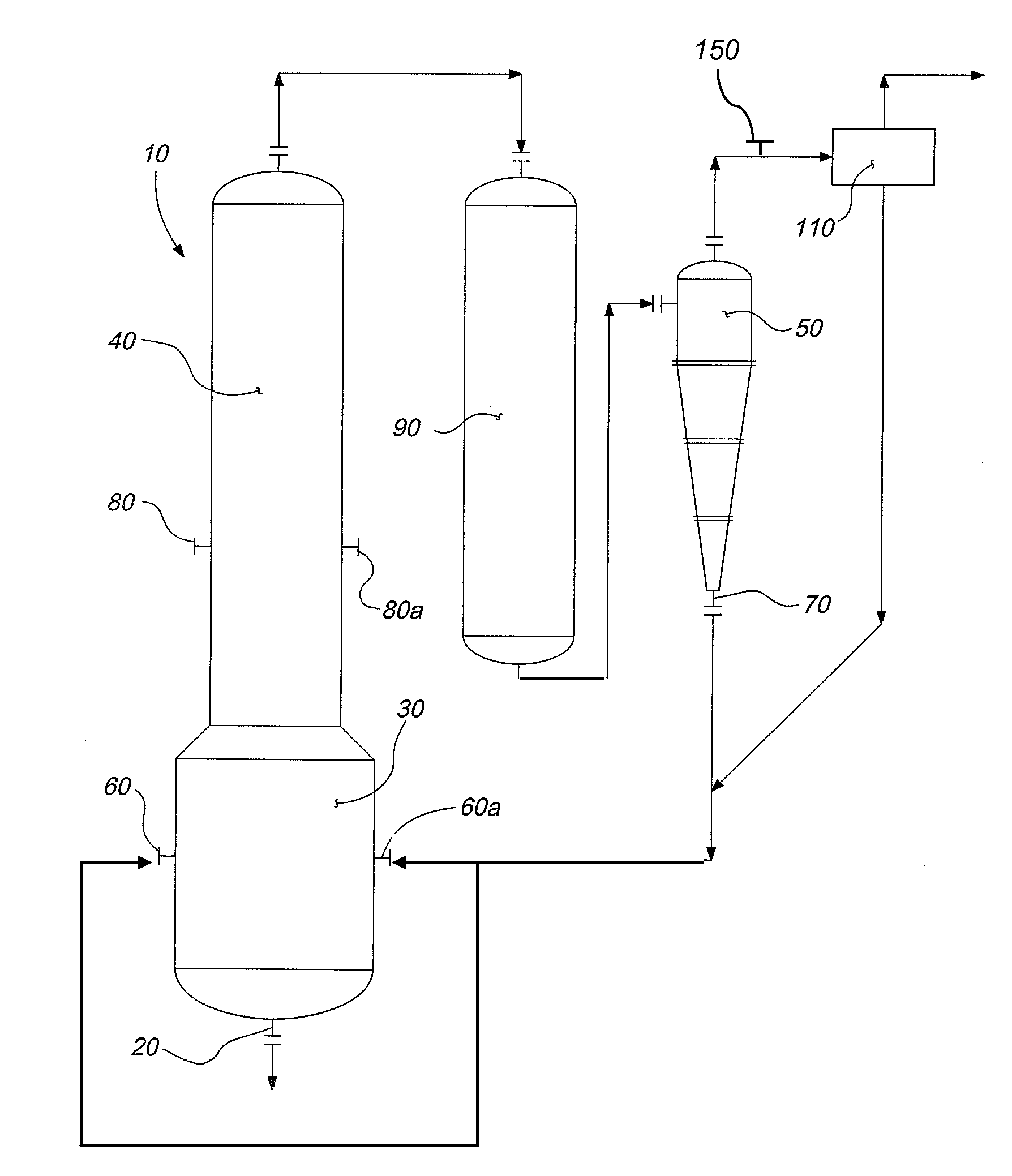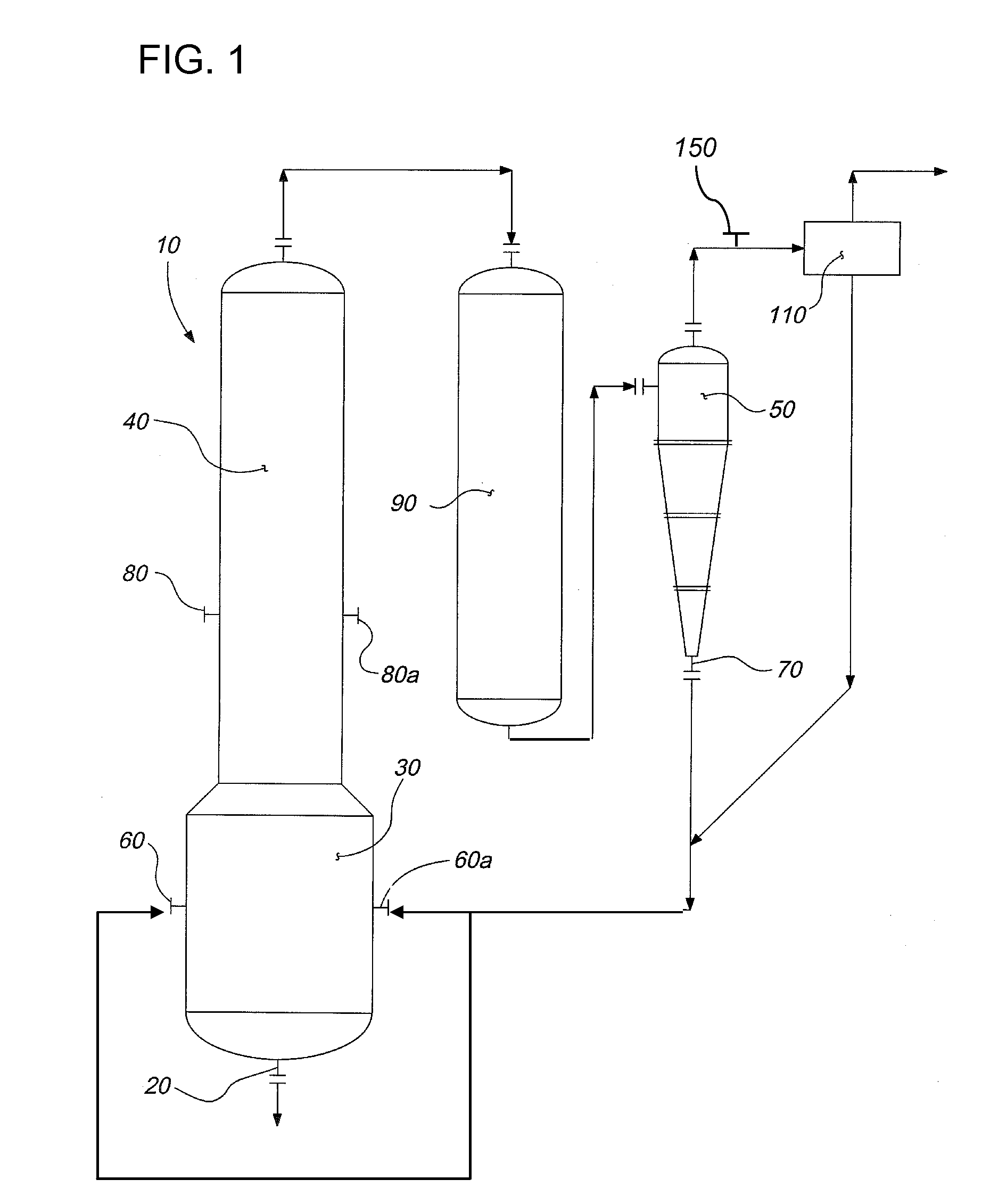Flux addition as a filter conditioner
a filter conditioner and filter technology, applied in the direction of combustible gas production, combustible gas purification/modification, separation processes, etc., can solve the problems of reducing the permeability of elements to gas, restricting the passage of elements to synthesis gas, and affecting the efficiency of gasification systems, so as to increase the efficiency of gasification processes and systems, prevent infiltration, and increase the operational efficiency of particle filtration systems
- Summary
- Abstract
- Description
- Claims
- Application Information
AI Technical Summary
Benefits of technology
Problems solved by technology
Method used
Image
Examples
example 1
Hypothetical Example 1
[0046]The following example is not intended to limit the scope of the invention, but rather, to illustrate certain features of one embodiment. A mixture of kaolin clay and limestone with an average particle size of 15 microns is injected into the raw synthesis gas stream downstream of the cyclone (initial separating device) and upstream of the particle filtration unit. The average size of the remaining entrained char particulates downstream of the cyclone is typically 1-2 microns. The coarse particle size of the additive prevents the fine submicron char particles from being lodged and embedded in the pore of the filter, thereby causing plugging of the filter. The kaolin and limestone particles simultaneously may also capture and scavenge certain trace contaminants or volatile metals, such as, but not limited to, arsenic and germanium. The char, kaolin, and limestone mixture, after being separated by the filter from the syngas stream, is transported and injected...
PUM
| Property | Measurement | Unit |
|---|---|---|
| size | aaaaa | aaaaa |
| temperature | aaaaa | aaaaa |
| temperature | aaaaa | aaaaa |
Abstract
Description
Claims
Application Information
 Login to View More
Login to View More - R&D
- Intellectual Property
- Life Sciences
- Materials
- Tech Scout
- Unparalleled Data Quality
- Higher Quality Content
- 60% Fewer Hallucinations
Browse by: Latest US Patents, China's latest patents, Technical Efficacy Thesaurus, Application Domain, Technology Topic, Popular Technical Reports.
© 2025 PatSnap. All rights reserved.Legal|Privacy policy|Modern Slavery Act Transparency Statement|Sitemap|About US| Contact US: help@patsnap.com



